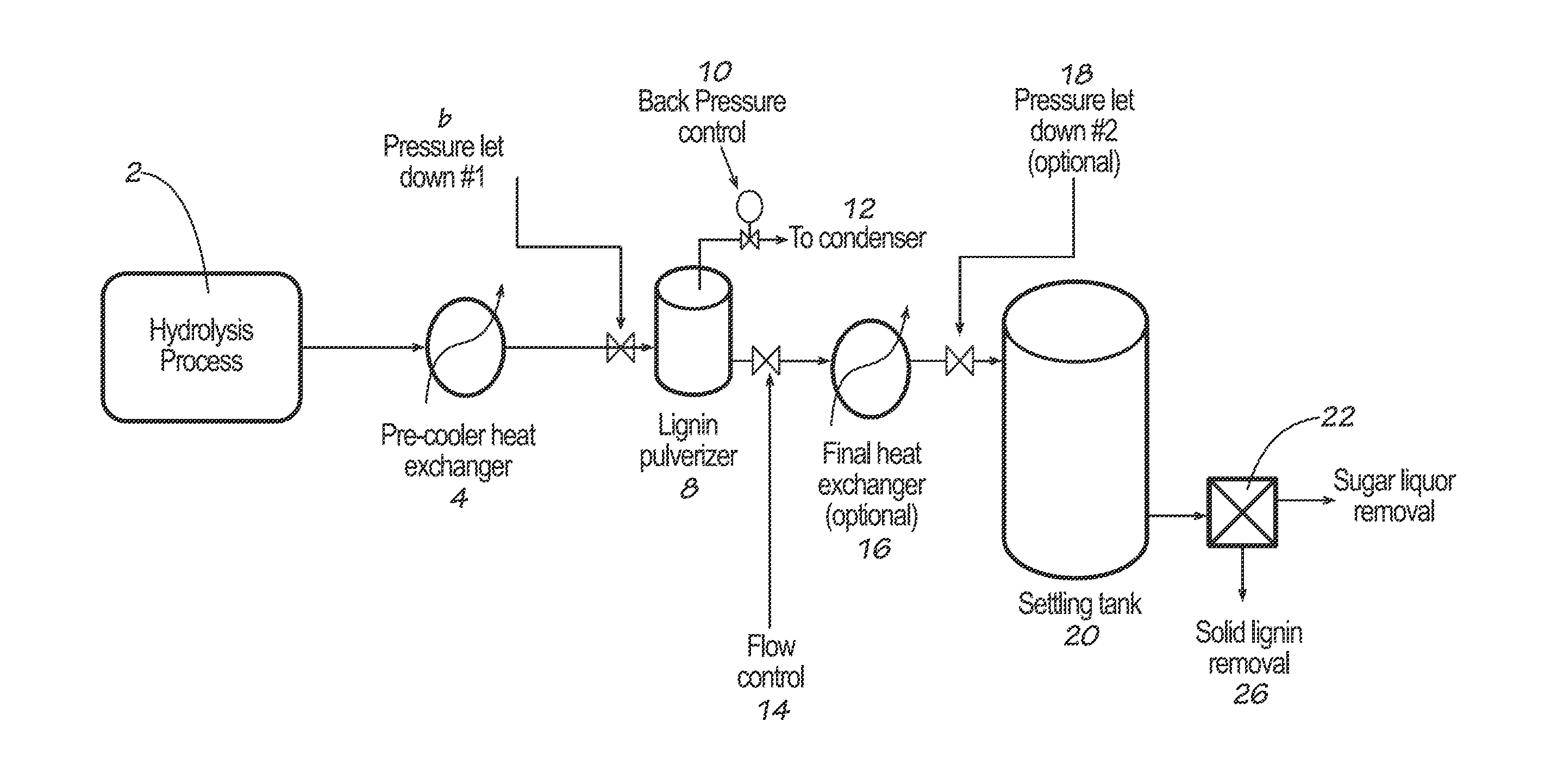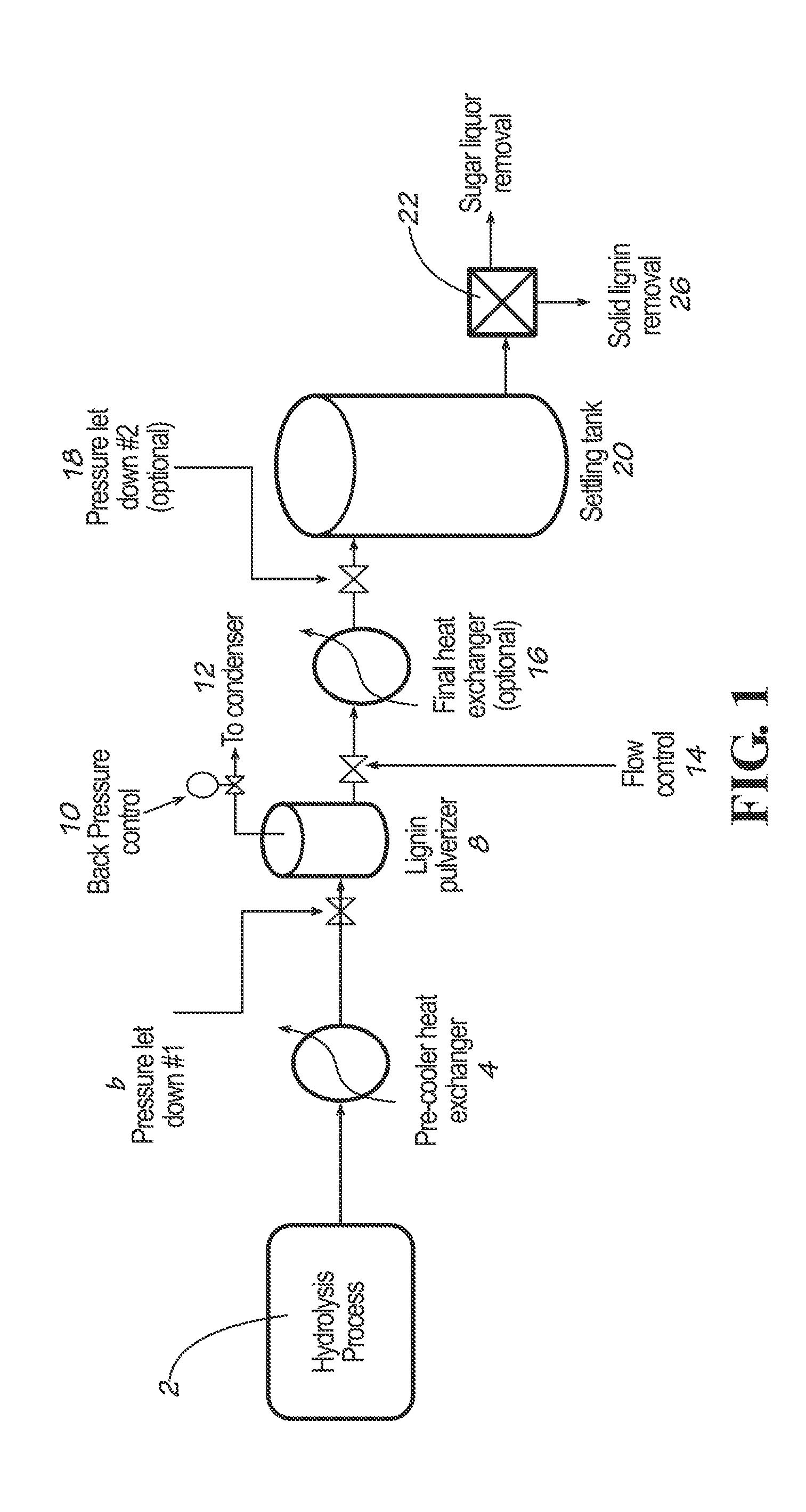Lignin production from lignocellulosic biomass
- Summary
- Abstract
- Description
- Claims
- Application Information
AI Technical Summary
Benefits of technology
Problems solved by technology
Method used
Image
Examples
example 1
[0077]Pretreatment (fractionation) and cellulose hydrolysis processes liberate lignin from lignocellulosic biomass utilized as feedstock. For testing in this example, lignin samples, which were generated from the flashing of cellulose effluent, were tested to determine heating value, proximate, ultimate, and ash fusion temperature, ash oxide composition, moisture content, and particle size.
Drying Rate and Moisture Content
[0078]When the lignin is separated from the flashed cellulose hydrolysis effluent glucose stream utilizing gravity and 20 μm filter paper, it has an average moisture content between 65% and 75%, by weight. This can be further reduced by using a centrifuge or vacuum filtration unit to more effectively separate the solids from the mother liquor. The representative lignin sample was obtained from the sludge collected in the bottom of the glucose product tank, whose product was generate from multiple runs of 100 mesh wood flour at the cellulose hydrolysis conditions of ...
PUM
| Property | Measurement | Unit |
|---|---|---|
| Temperature | aaaaa | aaaaa |
| Time | aaaaa | aaaaa |
| Particle size | aaaaa | aaaaa |
Abstract
Description
Claims
Application Information
 Login to View More
Login to View More - R&D
- Intellectual Property
- Life Sciences
- Materials
- Tech Scout
- Unparalleled Data Quality
- Higher Quality Content
- 60% Fewer Hallucinations
Browse by: Latest US Patents, China's latest patents, Technical Efficacy Thesaurus, Application Domain, Technology Topic, Popular Technical Reports.
© 2025 PatSnap. All rights reserved.Legal|Privacy policy|Modern Slavery Act Transparency Statement|Sitemap|About US| Contact US: help@patsnap.com



